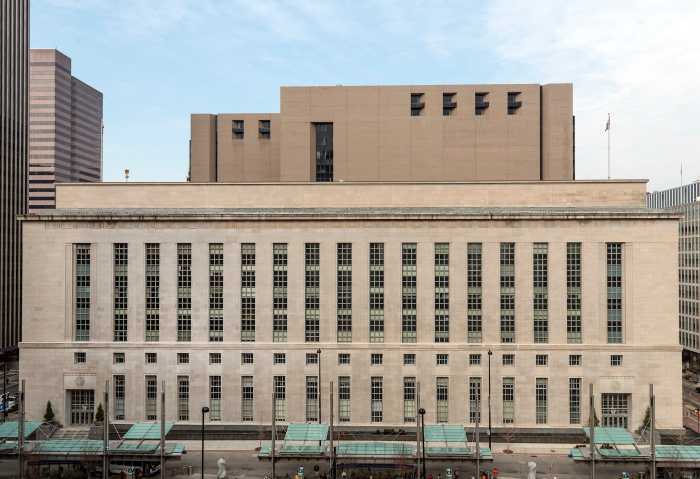The Louis Armstrong House Museum is set to debut a new oral history exhibition next month exploring the voices, memories, characters and legacies of the Corona and East Elmhurst communities that the iconic jazz musician was part of.
The Corona Collection, which debuts at the Louis Armstrong House Museum (LAHM) on Oct. 2, brings Louis and Lucille Armstrong to life through the people who knew them best during their time in Corona.
The exhibition, which runs until March 2026, also offers a snapshot in time of Corona and East Elmhurst in the 28 years that Louis and Lucille called the area home.
The couple moved to 34-56 107th St. and remained there until Louis’ death in 1971. The house was later left to the city following Lucille’s death, preserving Armstrong’s legacy.
The Louis Armstrong Center opened across the street from the house in 2023, boasting a 75-seat performance center, a number of exhibitions and the Armstrong Now artist residency program.
The Corona Collection, featuring the stories of 15 local residents who lived in the neighborhood at the same time as the Armstrongs, will debut at the Louis Armstrong Center when it opens next month.

Charanya Ramakrishnan, coordination or the Corona Collection exhibit and director of community engagment at LAHM, said the exhibition “makes sure” that the communities of Corona and East Elmhurst are “part” of the museum and the Louis Armstrong Center.
“This neighborhood meant so much to Louis Armstrong,” Ramakrishnan said. “He wrote letters (about the neighborhood). He wrote a letter called our neighborhood – he had his scrapbook with his neighbors and he was a mentor to so many of these children who grew up in the blocks. We just thought, ‘We need to get their stories to complete the archives in some way.'”
Regina Bain, LAHM’s executive director, said the new oral history exhibition tells the story of 15 characters who lived in the neighborhood at the same time as the Armstrongs but said the neighborhood character of Corona and East Elmhurst shines through in each of the interviews.
“They have a character, they have a nature, and like any character, they’re complex and they change,” Bain said, noting that the oral histories can prove an “invaluable” resource in documenting how neighborhoods have changed over time. “It’s been really interesting getting to know the character of Corona and East Elmhurst through the stories of the neighbors.”
Bain added that the oral history exhibition provides insight about who Louis and Lucille Armstrong really were, noting that the neighborhood had a tremendously powerful impact on the couple.
“What did it mean for Louis to stay in this neighborhood when he could have gone to many other more affluent neighborhoods, but he wanted to stay here for many reasons, some of them personal, but also because of the impact that he was having and because he cared about the kids in this neighborhood.”
She described the exhibition as an “intergenerational story,” noting that many of the interviewees featured in the exhibition were once mentored by Armstrong as children.
One such interviewee is Willie Johnson, who grew up in Corona and shared a photograph of him sitting alongside Louis Armstrong on the steps of the Armstrong household as he learned how to play the trumpet alongside the jazz icon.
“Louis Armstrong taught me that art is creativity at its finest, so I got into playing music. He didn’t glamorize himself with me because of his fame and his music. He was more humble, caring and understanding,” Johnson said in a statement.


Bain said the 2023 opening of the Louis Armstrong Center has been “transformational” for LAHM, noting that the vision for the center dates back at least 25 years.
“It took 25 years. It took $26 million it took a whole lot of persistence, but it has completely transformed the way that we can make this legacy sing,” Bain said.
As well as boasting performance and exhibition spaces, the center is home to the Louis Armstrong archives, allowing Armstrong Now artists in residence to delve through the archives and uncover stories about the jazz icon that had previously been undiscovered.
“We had an amazing tap dancer, Lisa, and she found this whole story about tap dance in the archives that we just hadn’t focused on, but she did, because that’s who she is and that is her lens,” Bain said. “She was able to create this beautiful presentation that combined performance and archival story in a way that we wouldn’t have done without her.”
Bain added that it is the center’s “job” to open the archives to artists inspired by Louis Armstrong, remarking that allowing more people to view the archives allows more strands to be uncovered.
“Meaning is created constantly through those archives,” Bain said. It’s incredible that Louis saved everything – letters, manuscripts, postcards. There’s so much of it that isspeaking back today and we’re able to build story lines through that.”
Ramakrishnan, meanwhile, said the oral history exhibition has allowed LAHM to fill in the blanks for several missing pieces in the archives.
One story, for example, highlighted that PS 143 was named after Louis Armstrong because he had taught music classes in the school, not just because he had lived in the area.
“I think that’s the most powerful story, how he was working with the school,” Ramakrishnan said. “When I joined the museum I thought it (was named after him) because Louis Armstrong lived in the neighborhood, but it was more than that.
“He was working with a teacher, and we did the oral history with Miss Yvonne Lambie. She’s 95 years old. She told us what it meant, how Lewis was looking out for the kids and how education was important (to him).”

The center’s performance space, on the other hand, allows LAHM to keep Armstrong’s legacy alive and flourishing today, Bain said.
She said the center has recently launched trumpet lessons for children aged 8-14, with students from the center performing at a Mets home game at Citi Field on Aug. 28.
“Louis Armstrong is a legacy that is grounded in history, but is very much alive today, and will be moving us into the future,” Bain said.” And so the way that we manifest it in community today, through the Corona Collections, through all the programming that we do, it’s critical that we are thinking about history, thinking about the present, and moving into the future.”


































